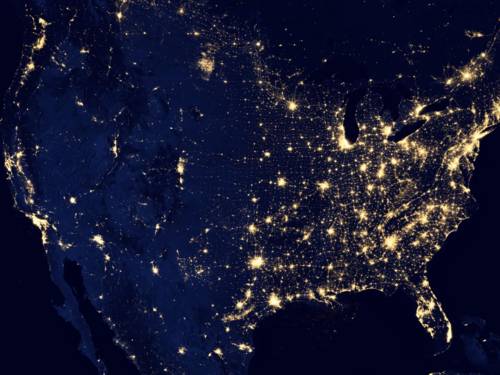AN INTERVIEW
Einstein@home
The physicist Bruce Allen devotes his research to the not so small matter of the entire universe.
The year 2005, which was named Einstein Year, was when he first got the “Einstein@Home” project off the ground. He only reveals this much: he wants to receive signals from space as he continues to look for gravitational waves. Allen is a Director at the Max Planck Institute for Gravitational Physics (Albert Einstein Institute) in Hannover.
 © MADSACK Mediengruppe
© MADSACK Mediengruppe Bruce Allen
WHAT IS YOUR FOREMOST OBJECTIVE?
We want to capture the first gravitational waves from a rotating neutron star. The gravitational waves which were discovered in 2015 came from two colliding black holes and we now want to move onto the next stage.
WHAT IS EINSTEIN@HOME ALL ABOUT?
We use computer power generated by people from all over the world to detect signals in space from rotating neutron stars. Satellites and telescopes pick up this data and the weak signals contained in the transmissions can be detected using the combined strength of the computers. It is like trying to pick out a particular grain of sand with a distinctive shape from an infinite number of grains of sand. We need an enormous amount of computing power to achieve this. A supercomputer is extremely expensive, so with Einstein@Home we combine the strength of a very large number of computers. When pooled together, they work as efficiently as one of the 20 to 30 the fastest computers in the world. The data we receive helps us to understand the universe better.
 © MADSACK Mediengruppe
© MADSACK Mediengruppe Sternenbild
HOW DO YOU GO ABOUT FINDING NEUTRON STARS?
Neutron stars are small, very dense objects – a teaspoon of a neutron star has the same mass as an entire mountain. They are sometimes only 20 kilometres in diameter and rotate very quickly. They radiate gravitational waves, gamma rays and radio waves a bit like a lighthouse that sends out a beam of light at regular intervals. Satellites and telescopes pick this data up and the pool of computers trawl through the data to find weak signals that are hidden there. We can pinpoint the location of the neutron stars using the data we receive. Every participant who locates a neutron star receives a certificate.
WHERE DO THE PARTICIPANTS COME FROM?
Approximately half a million people from all of the 193 member states of the United Nations have made a contribution to Einstein@Home. Most of them come from the USA; Germany and the UK are in second and third place.
HOW SUCCESSFUL IS EINSTEIN@HOME?
We have detected around 100 new neutron stars since the project started by detecting their gamma rays and radio waves. Unfortunately, over the past 14 years, we have still not detected any gravitational waves from a single neutron star. This is a real shame because this is our ultimate objective. For example, gravitational wave can tell us what the inner structure of a neutron star looks like. This is very exciting for astronomy and nuclear physics research.
WHAT ARE THE MAIN CHALLENGES?
The most difficult part is finding people who are able to participate over the long term. Many people are really enthusiastic about Einstein@Home at the beginning, especially because it is very easy to take part and you can just lean back and relax afterwards. However, the numbers drop off very quickly for reasons such as new updates or because a participant has purchased a new computer. However, it is important for the sake of the research to collect data over a longer period.
ARE THERE SIMILAR PROJECTS IN OTHER PARTS OF THE WORLD?
One of the most well-known projects that adopts a similar format is SETI@home. The participants combine forces with their internet-linked computers to find traces of intelligent life beyond our planet.
Interested? Becoming part of the Einstein@Home project is just a simple click away:

 Deutsch
Deutsch
 English
English
 中文
中文
 Danish
Danish
 Eesti
Eesti
 Español
Español
 Suomi
Suomi
 Français
Français
 Italiano
Italiano
 日本語
日本語
 한국
한국
 Nederlands
Nederlands
 Norge
Norge
 Polski
Polski
 Portugues
Portugues
 Русский
Русский
 Svenska
Svenska
 Türkçe
Türkçe
 العربية
العربية
 Romanesc
Romanesc
 български
български